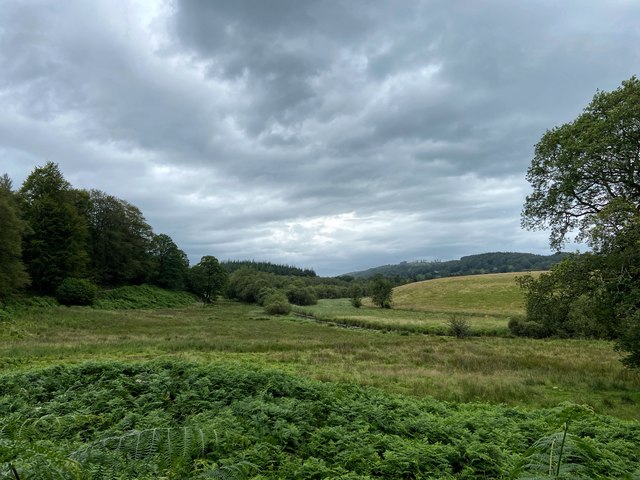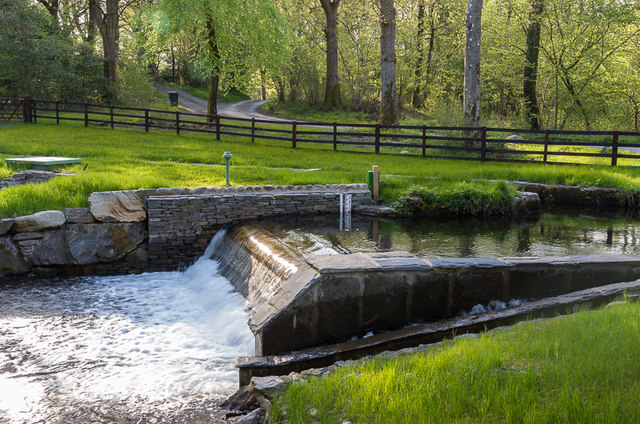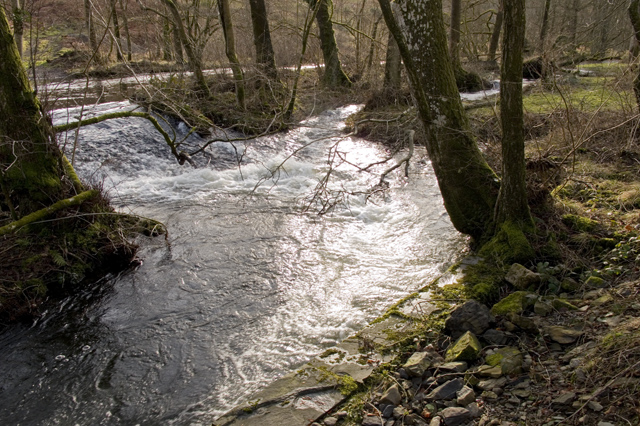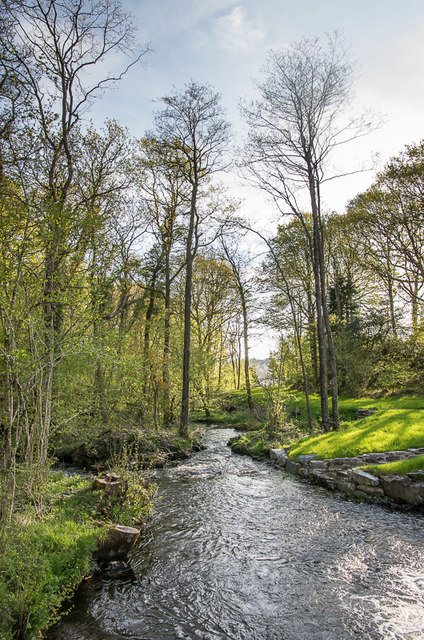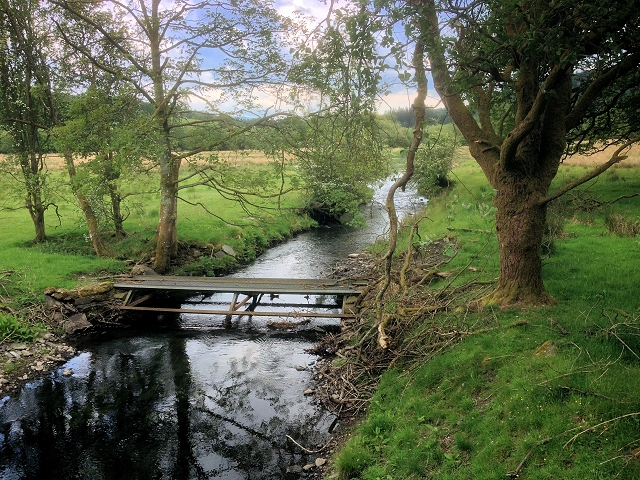Topics > County Durham > County Durham, 1848
County Durham, 1848
Extract from: A Topographical Dictionary of England comprising the several counties, cities, boroughs, corporate and market towns, parishes, and townships..... 7th Edition, by Samuel Lewis, London, 1848.
DURHAM (COUNTY of), a maritime county, bounded on the north by Northumberland, on the east by the North Sea, on the south by Yorkshire, and on the west by Westmorland and Cumberland. It extends from 54° 27' to 55° 1' (N. Lat.), and from 1° 10' to 2° 20' (W. Lon.), and includes about 624,500 statute acres: the county contains 54,579 inhabited houses, 3108 uninhabited, and 537 in progress of erection; and the population amounts to 318,542, of whom 152,442 are males, and 166,100 females.
Prior to the Roman conquest of Britain, the county formed part of the extensive territories of the Brigantes. In the Roman division of the island it was included in Maxima Cæsariensis; and in the time of the heptarchy it constituted part of the Anglo-Saxon kingdom of Northumberland, composed of the two inferior states of Bernicia and Deira, of which latter Durham appears to have been a portion. Although the county has been called a county palatine by prescription, yet the first prelate known to have exercised palatine jurisdiction was Bishop Walcher, who, soon after his elevation to the see, was also invested by the Conqueror with the earldom of Northumberland, vacant by the deposition and death of the Saxon earl, Waltheof; and it is probable that either then or at some early subsequent period, by grant or tacit permission, Walcher assumed the palatine powers to the same extent as that enjoyed by his successors. From this time, owning, within the limits of the palatinate, no earthly superior, the successive prelates continued for four centuries to exercise every right attached to a distinct and independent sovereignty. Their privileges, however, were abridged by the act of resumption passed in the 27th of Henry VIII., the most important provisions of which, as regarded this palatinate, were as follows:—the bishop was deprived of the privilege of pardoning for treason, murder, manslaughter, and felony, of reversing outlawries, and of appointing the justices of peace and of assize; writs were directed to run in the king's name, the ancient form of indictment," Contra pacem episcopi," being altered to the usual form, "Against the king's peace;" and sheriffs, bailiffs, and other officers, were made amenable to the general laws of the realm. The right of attesting processes within the franchise was reserved to the bishop, and it was directed that the prelate and his temporal chancellor should be always, ipso facto, two of the justices of the peace. In the reign of Charles II., an act was passed to enable the county palatine and city of Durham to send knights and burgesses to parliament, the first elections pursuant to which took place in 1675. By the act of the 6th of William IV., cap. 19, the palatine jurisdiction was separated from the bishopric and transferred to the crown as a distinct franchise and royalty.
The county is included within the diocese of Durham, and province of York, and forms an archdeaconry, comprising the deaneries of Chester-le-Street, Darlington, Easington, and Stockton, and containing 75 parishes. It is also, for civil purposes, divided into four wards, bearing the same names as the deaneries. The county contains the city of Durham; the market and sea-port towns and newly-created boroughs of Sunderland and South Shields; the town of Gateshead, which has also recently been made a parliamentary borough; the market and sea-port towns of Hartlepool and Stocktonupon-Tees; the market-towns of Barnard-Castle, Bishop-Auckland, Darlington, Sedgefield, Staindrop, and Wolsingham; and the port of Seaham-Harbour. By the act of the 2nd of William IV., cap. 45, Durham was divided into the Northern and Southern divisions, the former composed of the wards of Chester and Easington, and the latter of those of Darlington and Stockton: two knights of the shire are returned for each division. Two citizens are sent to parliament for the city of Durham, two burgesses for Sunderland, and one each for Gateshead and South Shields. The county is included in the Northern circuit, and the assizes and quartersessions are held at Durham, where stands the county gaol and house of correction.
The surface is much varied: for the most part there is a gradual ascent from the sea-coast to the heathy mountains which wholly occupy the west of the county. The general aspect of the coast is bare and dreary; but between the extensive swells that constitute the greater part of the surface lie numerous deep and narrow dells, the scenery of which is of a pleasing and romantic character; and every brook that falls into the sea has its banks adorned with a profusion of well-wooded heights. The soil may be described under the three principal heads of clay, loam, and peat. The corn and pulse crops generally cultivated are, wheat, barley, oats, maslin, beans, peas, and tares; rye is but rarely cultivated, owing to the small proportion of sandy soil proper for it: the mixture of wheat and rye, provincially termed "maslin," is very commonly grown, and makes a most wholesome household bread. Mustard was formerly much cultivated, "Durham mustard" being proverbial for its excellence; but it is a crop now seldom met with. The old meadow lands reserved for the growth of what is termed "old land hay," are either upland meadows or "haugh" lands near some of the rivers. The best old grazing pastures are at Skernside, Binchester, Stanhope, Billingham, Staindrop, Barnard-Castle, and a few other places; but the extent of lands of such superior quality is inconsiderable. The best wooded district is the vale of Derwent, the soil of which is peculiarly favourable to the growth of Wood, especially of oak. The wood grown in the eastern part is applied to various uses at the collieries, and that in the western is chiefly used in the lead-mines: the hazels are every where, for the most part, cut into rods to be manufactured into a kind of large basket called a "corf," used for drawing coal out of the pits. During the last hundred years plantations have been formed to a great extent, especially in the vicinity of gentlemen's seats. The Wastes consist almost entirely of the heathy moors in the west: the improvable moors, fells, and commons have almost wholly been divided and inclosed. The lower part of the county was formerly noted for the largest breed of Sheep in the kingdom, known as the "Tees-water breed," many weighing from 50lb. to 60lb. per quarter; of late years, the introduction of the Leicester breed has reduced the size of the Durham sheep, but improved the quality of the mutton. In Teesdale, Weardale, and towards the head of the Derwent, on the small farms adjacent to the extensive moors that intervene between these dells, are still bred the old stock of hardy heath sheep, known by their black or mottled faces and horns, black legs, and long coarse wool. The south-eastern part of Durham, like the adjoining portion of Yorkshire, has long been celebrated for a valuable breed of draught Horses, called "Cleveland Bays," which are the original stock of what was formerly the English coach-horse, and of a present race of strong hunters and road-horses.
The mineral productions of Durham are important, and its geology is interesting. The entire tract consists of a series of beds irregularly intermingled in larger and smaller strata, and some of them alternating with each other several times: they are composed of coal, sandstone, slate-clay or shale, and basalt, and possess the characters of what is geologically termed the "independent coal formation." All the beds of coal dip towards the east, so that the lowest of them, which, near the coast, is far below the level of the sea, appears on the surface at Cross Fell. Jarrow, near the north-eastern extremity of the county, is geologically considered as in the centre of the coal district, the strata composing which are here found at their greatest depth, and hence rise gradually in every direction. Forty beds of coal have been observed in the "coal-measures," which, comprising the central and northern parts of this county, likewise extend far into the maritime parts of Northumberland. The coal is of the soft caking kind, burns into excellent cinders, and leaves few ashes. The area of the Durham coal-field is estimated at 594 square miles, of which the portion wrought out on the Tyne amounts to thirtynine miles, and on the Wear to forty: the workable strata, averaging twelve feet, make the contents of each mile 12,390,000 tons; but of this amount onethird is lost in small coal, by the interception of dykes, &c. The number and thickness of the seams in the different collieries are extremely various, some having only one capable of being worked, and others seven; in thickness these workable veins vary from less than two feet to six. Owing to the different sizes of the two rivers Tyne and Wear, a curious distribution of the coaltrade has taken place: the Tyne vessels, being large, are chiefly engaged in supplying the London market, while the Wear vessels are for the most part so small that they can enter the shallow rivers and harbours on any shore, and therefore chiefly supply the eastern and southern coasts of England, as far westward as Plymouth. The exportation of coal to Holland, Germany, France, and Russia, is considerable; and the aggregate quantity exported from this county, exclusively of the pits on the Tyne, which equal in number all the watersale collieries of the remainder of it, and the produce of which is included with the exports of the Northumberland coal from the port of Newcastle, amounts nearly to 1,100,000 chaldrons annually.
The range of hills in the western part of the county is composed of strata consisting of about twenty beds of limestone, alternating with about fifty of sandstone, eighty of shale, a few thin beds of coal, and one of basalt, the whole resting on a bed of red sandstone, which is incumbent on greywackè slate. The tract between these hills and the line where the coal strata become of a valuable thickness forms part of a district extending likewise the whole length of Northumberland, which has been called by geologists Lead-measures, from veins of lead-ore abounding in the beds of sandstone and limestone of which it is chiefly composed, and in which various marine shells, or impressions of them, are frequently found, while the fossil remains found in the strata on the east belong exclusively to fresh water, or are vegetable remains. In the eastern part of the county a range of Magnesian limestone extends from the mouth of the river Tyne to Hartlepool, forming along the coast an almost uninterrupted succession of cliffs, and gradually diverging towards the south-west, passing by West Boldon to the village of Coxhoe, and thence to the river Tees; in its progess it rises into a series of round-topped hills, of which the highest, at Painshaw, near the river Wear, has an elevation of about 400 feet. The stratum varies in thickness from 70 feet, gradually increasing towards the coast; in sinking for coal at Hetton it was found to be 156 feet thick, at Monk-Wearmouth 200 feet, and at Haswell 280 feet, and at Hartlepool the rock has been bored to a depth of more than 300 feet, without reaching the substratum of sandstone. The prevailing colours are white, yellow, and brown, which last is quarried extensively at Sunderland, both for burning into lime and for building. The rocks near Marsden contain a larger proportion of magnesia than those in other places, and are much frequented by the manufacturers of Epsom salts. The upper stratum consists chiefly of breccia, below which the rock is of crystalline and cellular texture; and the lower stratum, which is of a slaty structure, contains in some parts compact masses of grey limestone of so fine a texture, as to have been formerly worked for marble.
Basalt is found both in the lead and coal measures, chiefly in the various "dykes" or "faults" that intersect and dislocate the strata, and is procured in many places for the purpose of repairing roads, for which it is superior to any other material yet discovered. In the district of the lead-measures, Galena is the only lead-ore procured in abundance; it contains silver varying from 2 to 42oz. in the fother of 21 cwt., the general average being 12oz.: of the ore esteemed of good quality, 32 cwt. yield one ton of lead. In the strata of shale accompanying the coal is found clay ironstone, in beds or nodules, the nodules containing galena and iron pyrites, the latter of which is also found in great abundance crystallized and disseminated in the beds both of coal and shale. Great quantities of the iron-ore, which abounds more especially in the western part of the coal district, appear to have been smelted at some remote period, from the immense heaps of iron slag found in various places in the vicinity of Lanchester, Tanfield, Hamsterley, Evenwood, &c., and traditionally said to be vestiges of Danish works. A bed of sandstone is worked for millstones, a few miles north of Stanhope; another for grindstones and filters at Gateshead Fell, where the seam of stone is eleven fathoms thick; and others of freestone for building in various parts of the county. In many places in the western part is found a flaky sandstone, there called grey slate, and used for roofing. At Pallion are quarries of a variegated marble; and a stratum of limestone in Weardale, near Frosterley, from its being variegated and taking a fine polish, is denominated marble, and is used for chimney-pieces and tombstones. In the coal-measures, immediately below the vegetable soil, occurs potters'-clay of a blueish or smoke-grey colour, sometimes yellow, approaching to orange. At Seaham is found a fine silver sand, adapted to the manufacture of the finest glass; and yellow ochre is obtained at Thornley.
The manufactures are various. Darlington has long been noted for that of divers linen fabrics, which is also carried on at Bishop-Auckland, Stanhope, and Stockton. Carpets are made at Barnard-Castle and Durham. The worsted manufacture is considerable at Durham and Darlington, and is carried on to a limited extent at Bishop-Auckland and Gateshead. There are manufactories for iron at Gateshead, Shields, and Sunderland; and several for nails at each of these towns and at Swalwell. Spades and edge-tools are made at Winlaton. Paper is extensively made at Shotley-Bridge, and in the neighbourhood of Durham; glass, including crown and flint glass, and glass bottles, at Gateshead, Sunderland, and South Shields, where also plate glass is made; and earthenware, both for home sale and exportation, at Gateshead and Sunderland. Most extensive alkali-works are carried on at Gateshead, the Felling, South Shields, and Jarrow; and there are iron-works at Birtley, six miles from Gateshead. Ship-building is carried on extensively at Sunderland, South Shields, and Hartlepool, which, with Stockton, are the chief ports. Seaham is a private port belonging to the Marquess of Londonderry, where the coal from his lordship's collieries is shipped. The principal articles of export are the mineral and manufactured produce of the county; the imports are timber, flax, hemp, hides, bar-iron, linseed, oak-bark, and linen-yarn.
The principal rivers are the Wear, the Tees, and the Tyne. The Wear, although a river of inferior magnitude, forms, in its outlet to the sea, the entire harbour of Sunderland: the tide flows up it to Picktree, and it is navigable to Fatfield, forming one of the grand arteries of the export coal-trade; the navigation has been improved under various acts of parliament, whereof the first was obtained in 1716, and the last in 1819. The Tees forms the port of Stockton, and empties itself into the sea a few miles below it through a wide estuary; the tide ascends this river as high as Worsall, and it is navigable to a short distance above Stockton, the navigation having been greatly improved under acts passed in 1808 and 1828, from the vicinity of Stockton to its estuary. The Tyne forms the northern boundary of the county, separating it from Northumberland, from about two miles above Ryton to its mouth, a little below South Shields; and is navigable to a distance of eight miles above Newcastle, the tide flowing up to above Newburn. Tributary to the Tyne are, the powerful stream of the Derwent, and the Team; and to the Wear, the Browney, Gaunless, and Bedburn: the Skerne is tributary to the Tees. The county enjoys great facilities of railway communication. One company alone, the York and Newcastle, possesses above 100 miles of railway within its limits, comprising a line from Darlington, by Durham, to the north of the county; a line from Durham to Sunderland; a railway called the Brandling Junction, connecting the towns of Gateshead, South Shields, and Sunderland; a railway from South Shields to Stanhope, in the west; and some smaller lines. The chief railways belonging to other companies are, the Stockton and Darlington, extending from Stockton, by Darlington, to Witton, near Auckland; the Hartlepool; the Stockton and Hartlepool; the Clarence; and the Wear-Valley.
The county contained at least four Roman stations; one at Lanchester, where many remains have been found, and where Horsley places the Glannibanta of the Notitia; Binchester, the Vinovium of Antoninus; Ebchester, considered by both Horsley and Stukeley to have been the station Vindomora; and Cunscliffe, where Horsley places the Magæ of the Notitia, and where numerous coins, &c., have been discovered. The station Epiaco is thought by Horsley to have been situated at Chester-le-Street; and Ad Tisam is placed by Stukeley, at Pierse-Bridge. Considerable remains are yet visible of a way called the Watling-street, and of other Roman roads connecting the different stations. The principal encampment is that called Maiden Castle. Before the Reformation, the Religious Houses were, six monasteries, six colleges, and five hospitals; the most interesting remains are those of Jarrow and Finchale monasteries, and of St. Edmund's hospital at Gateshead. The remains of ancient Castles worthy of especial notice are those of Barnard-Castle, and of the castle of Durham; Witton and Brancepeth Castles have been restored. The finest specimens of ancient castellated mansions are Raby, Lumley, Bishop-Auckland, and Hilton Castles. The most remarkable Mineral spring is the salt-spring at Birtley, discovered about eighty years ago, in making a colliery drift, and from which, about the year 1810, 11,000 tons of salt were made annually. Near Durham is a spring strongly sulphureous, and Dinsdale Spa is also impregnated with sulphur; there is likewise a sulphureous spring in the bed of the Tees, about two miles above Barnard-Castle, and a spa well has begun to be fashionable at Shotley-Bridge. Among the Natural curiosities may be enumerated High Force and Cauldron Snout, cataracts on the Tees; Marsden and Blackhall rocks; the remarkable cavities in the earth at Oxen-le-Field; and the singular rocks at the Hartlepool promontory.




